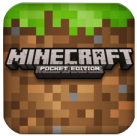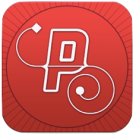Alright, I wanted to write a post about iPad apps that worked with an Earth Day theme, and did a little searching online to see what had been presented. There are some nice lists of apps (like these: 1, 2) that are focused on the earth, on history, on animals, but few that seem to actually present an educational method for teaching about the purpose of earth day. While I am all for appreciation of our planet and the beauty contained within, I am more apt to direct students toward action on preserving our planet and appreciating our world. So, in that light, this post is dedicated to ways students can create artifacts that show their planet love with iPads.
 Aurasma
Aurasma
Aurasma is platform forcreating augmented reality overlays for things in your immediate environment. What it enables students to do is create wording, video, images that they can ‘tag’ to a camera location, so when others come to that point, they see the content ‘floating’ with the image. The obvious implication would be to have students tag things in their environment with some of the environmental considerations, so others could become informed as well. The app is simple enough to use that a single teacher account could catalog all of the student work, or you could have students create their own free accounts. For younger students, a teacher could pre-tag a school yard, classroom or school and give students the ipads to do a walkabout and learn about things in their environment. I am very excited about this app, and have at least one big project coming up with it soon!
 Google Docs
Google Docs
If you have access to Google Docs, or wish to set it up with your students, you can upload your activities for Earth Day and have a paper free learning day! As Google Docs is connected online, students can share their work with others and reach out to others taking action for Earth Day. Another option is to have all students collaborate on a document, perhaps a group of strategies to help their peers become more eco-friendly, then share the document and see the feedback you can get.
 Minecraft PE
Minecraft PE
I think Earth Day provides an excellent opportunity for students to use Minecraft educationally. In a virtual world where supplies must be gathered, scarcity exists and it takes time to create things, students could be placed into a carefully designed scenario to achieve a goal. (irrigate, build shelter, create a rare item) As students work through the challenge, parallels can be drawn to our world, and the lack of availability of some resources, or the impractical way in which we use those resources some times.
 Path On
Path On
This little app is so simple, but so connected. Basically, it allows a user to take a picture and then draw a line that becomes the direction of the words the user writes ‘on’ the picture. So, you put a path of words on the picture. However, it also has some basic editing functions, similar to Instagram and the like, and the ability to upload the finished images to social media. I like the idea of students being able to find something that they want to make a social comment on, taking a picture and making the statement directly on it. Added to that is the ability to then connect those statements, facts, information to the broader world either through a moderated school account, or their personal social media accounts.
 Twitter
Twitter
Ok, so I am cheating a bit with Google Docs and Twitter, as they are platforms, but there is no substitute for connecting students to the worldwide #earthday conversation as it is happening. Either on the projector or on their own iPads, have the students listen to the conversation, and then join in, depending on their age. If I were still teaching High School I would be having my students research and produce valid and poignant tweets using information they have found. How can they state their facts and a perspective in 140 characters to create a call to action? If you have your students add a custom hashtag, you can even archive the perspectives for review and discussion in class.
My point with these apps is that there are ways to actually get students actively engaged in Earth Day all over the app store if we are being creative with our uses of technology. I want to make sure my students are learning something that matters to them about the earth the other 364 days of the year as well. I am looking forward to discovering more ideas for Earth Day in the coming weeks. I know my planning won’t stop until April 21st. Let me know if you have any great apps or ideas you plan to use!

